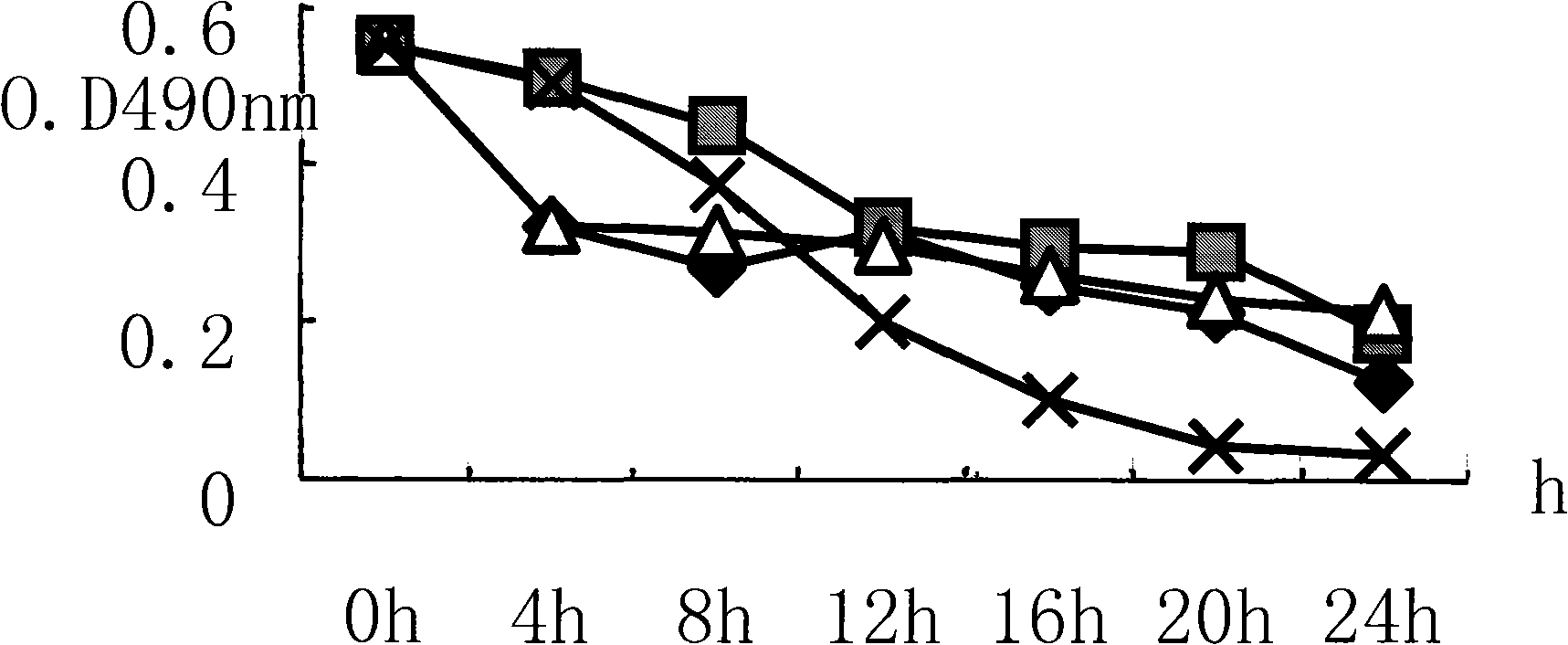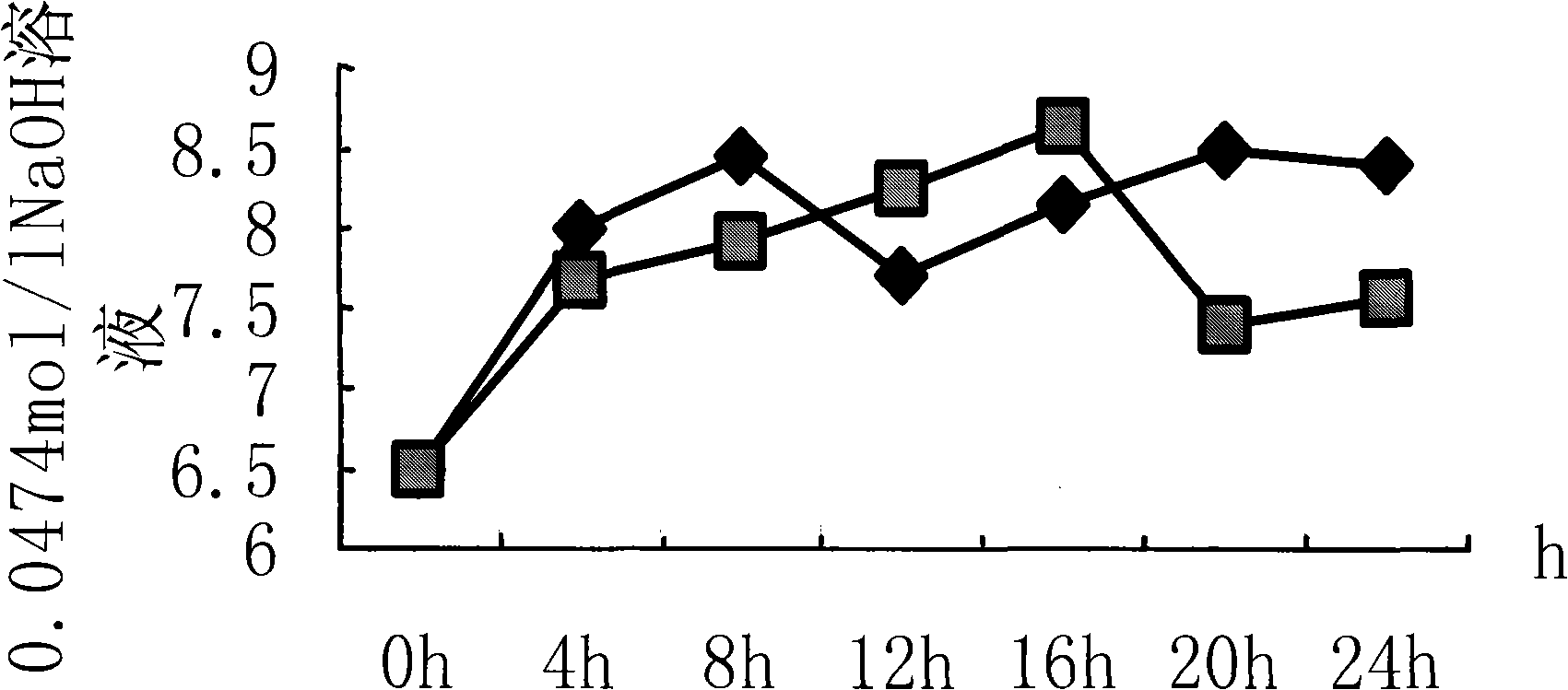Test method for main necrosis microorganism of tomato paste
An inspection method, tomato paste technology, applied in the field of food inspection, can solve the problems of no public reports on the standard system of tomato paste inspection methods
- Summary
- Abstract
- Description
- Claims
- Application Information
AI Technical Summary
Problems solved by technology
Method used
Image
Examples
Embodiment 1
[0038] Example 1: Isolation and Identification of Bacillus and Staphylococcus in Tomato Sauce
[0039] Pre-enrichment of six tomato pastes at 35°C to 37°C was carried out, and the pre-enrichment solution was cultured for 24 hours, and then transferred to the agar medium for enrichment of thermophilic acid-resistant bacillus and platinic acid bacteria. The isolated strains were identified by VITEK-32 biochemically, and the results were Bacillus subtilis, Bacillus licheniformis and Bacillus pumilus.
[0040]Pre-enrichment was carried out from bagged tomato paste and canned tomato paste at 35°C to 37°C, and the pre-enrichment liquid was cultured for 24 hours and then transferred to trypticase broth medium and improved BCP medium. The isolated strains were identified by VITEK-32 biochemically, and the results were Staphylococcus saprophyticus and Staphylococcus worriii.
[0041] Y6, Y10, Y19, Y35, Y36, Y41, Y53, Y56, Y65 and other more than 20 batches of tomato paste imported and...
Embodiment 2
[0046] According to the test procedure described in embodiment one, see appendix Figure 5 , 6 , wherein, by weight and volume percentage (g / 100mL), take 8% of tomato paste by aseptic operation, add 200mL of physiological saline, mix uniformly to make a suspension, and culture the 10% suspension at 35°C with a volume ratio Inoculate in the corresponding culture solution, and carry out the enrichment culture at 35°C for 24-48h through the corresponding medium. The same pre-enrichment and isolation medium were used for cultivation and transformation, and cultured at 35°C-37°C for 24-48h respectively. Bacillus and Staphylococcus can be isolated, and the isolated microorganisms are identified by VITEK-32. The results showed that: Bacillus subtilis (Bacillus subtilis), dwarf Bacillus (Bacillus. pumilus), licheniformis (Bacillus licheniformis) and so on; Staptococcus warneri) etc., these strains are identical with the similar strains of existing public reports.
Embodiment 3
[0048] According to the test procedure described in embodiment one, see appendix Figure 5 , 6 , wherein, by weight and volume percentage (g / 100mL), get tomato sauce 12% with aseptic operation, add 250mL physiological saline, mix uniformly to make a suspension, and mix 10% suspension culture solution 37 ℃ with the volume ratio Inoculate in the corresponding culture medium, carry out the enrichment culture at 37°C for 24-48h through the corresponding medium. The same pre-enrichment and isolation medium were used for cultivation and transformation, and cultured at 35°C-37°C for 24-48h respectively. Both spores and staphylococci can be isolated, and the isolated microorganisms are identified by VITEK-32. The spores and staphylococci are the same as the similar strains reported publicly.
PUM
 Login to View More
Login to View More Abstract
Description
Claims
Application Information
 Login to View More
Login to View More - Generate Ideas
- Intellectual Property
- Life Sciences
- Materials
- Tech Scout
- Unparalleled Data Quality
- Higher Quality Content
- 60% Fewer Hallucinations
Browse by: Latest US Patents, China's latest patents, Technical Efficacy Thesaurus, Application Domain, Technology Topic, Popular Technical Reports.
© 2025 PatSnap. All rights reserved.Legal|Privacy policy|Modern Slavery Act Transparency Statement|Sitemap|About US| Contact US: help@patsnap.com



